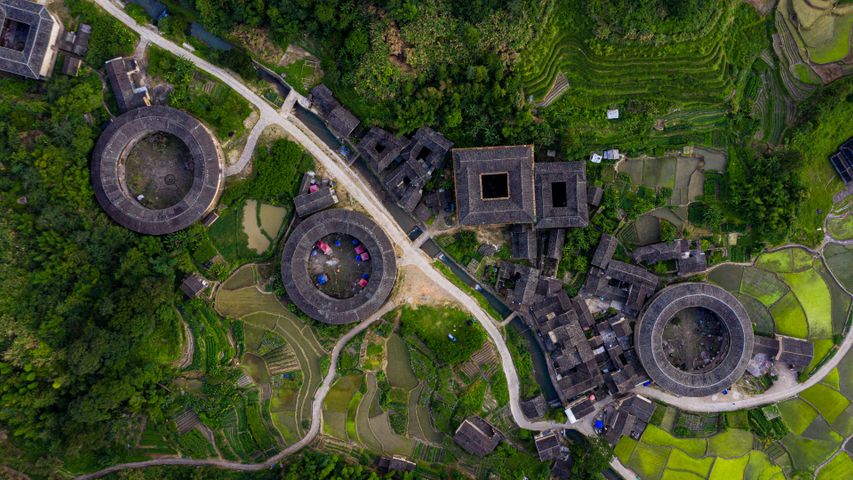Mineral-laden water in the Rio Tinto in Minas de Rio Tinto mining area, Huelva province, Andalusia, Spain
© David Santiago Garcia/Getty Image
Reflecting on the Rio Tinto. The strange hues of the Rio Tinto
This surreal landscape can be found in Andalusia, in south-west Spain, where high levels of iron and sulphur have turned this acidic river red. The Rio Tinto (Red River) may owe its chemical composition to 5,000-years or more of mining in the area. Ancient residents from the Tartessians, who lived in the area from around the 10th century BCE, and the Romans, dug for copper, silver and gold here - as well as the mineral pyrite, commonly referred to as 'fool's gold’. Legend has it that Rio Tinto was the site of the fabled mines of King Solomon.
Its extreme acidity means the river and surrounding areas are not hospitable places for the sort of plant life you might usually find in and along the riverbeds of Spain. Only unusual microorganisms, classified as extremophiles, can survive the water's acidic mix, by feeding on the minerals alone. Rio Tinto's strange ecology has attracted the attention of Nasa, which has studied the bacteria that have adapted to this highly acidic environment because the conditions resemble those on the surface of Mars.
Related Images
Bing Today Images




 Vila Franca Islet, São Miguel Island, Azores, Portugal
Vila Franca Islet, São Miguel Island, Azores, Portugal
 Mona Vale rockpool, Sydney, Australia
Mona Vale rockpool, Sydney, Australia
 Tea garden at Yangjiatang Village, Songyang County, China
Tea garden at Yangjiatang Village, Songyang County, China
 Great Blue Hole, Belize
Great Blue Hole, Belize
 Peggy's Cove Lighthouse, Nova Scotia, Canada
Peggy's Cove Lighthouse, Nova Scotia, Canada
 Fujian Tulou complex of historical and cultural heritage buildings in Fujian province, China
Fujian Tulou complex of historical and cultural heritage buildings in Fujian province, China
 Puerto de la Cruz, Tenerife, Spain
Puerto de la Cruz, Tenerife, Spain


